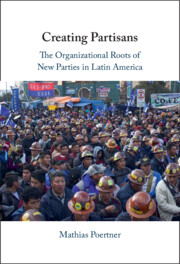Book contents
- Frontmatter
- Dedication
- Contents
- Figures
- Tables
- Acknowledgments
- 1 Introduction
- 2 Explaining Mass Support for New Parties
- Part I Development of Mobilization Strategies
- Part II Implications for Mass Support
- 6 Mechanisms of Electoral Support
- 7 Resulting Electoral Support
- 8 Resulting Party Identification
- 9 Conclusion
- References
- Index
6 - Mechanisms of Electoral Support
Bolivia and Ecuador
from Part II - Implications for Mass Support
Published online by Cambridge University Press: 07 December 2024
- Frontmatter
- Dedication
- Contents
- Figures
- Tables
- Acknowledgments
- 1 Introduction
- 2 Explaining Mass Support for New Parties
- Part I Development of Mobilization Strategies
- Part II Implications for Mass Support
- 6 Mechanisms of Electoral Support
- 7 Resulting Electoral Support
- 8 Resulting Party Identification
- 9 Conclusion
- References
- Index
Summary
This chapter empirically tests the theory about the micro-foundations of electoral support for new parties. It analyzes how individual voters respond to appeals based on different mobilization strategies in discrete choice experiments conducted in Bolivia and Ecuador. These experiments present voters with campaign posters that closely resemble real-world posters; the results illustrate that organizational endorsements are very effective at mobilizing electoral support, especially for new parties. Such endorsements are also effective across several different types of organizations and can sway organization members as well as people in their wider social networks. Furthermore, endorsements can influence voters even when they provide no direct information about policy platforms; unlike organization members, sympathetic nonmembers do not follow the endorsements. It also shows that endorsements can even overcome ethnic cleavages and foster electoral support when candidates’ policy positions are at odds with voters’ preferences.
Keywords
- Type
- Chapter
- Information
- Creating PartisansThe Organizational Roots of New Parties in Latin America, pp. 129 - 151Publisher: Cambridge University PressPrint publication year: 2024

